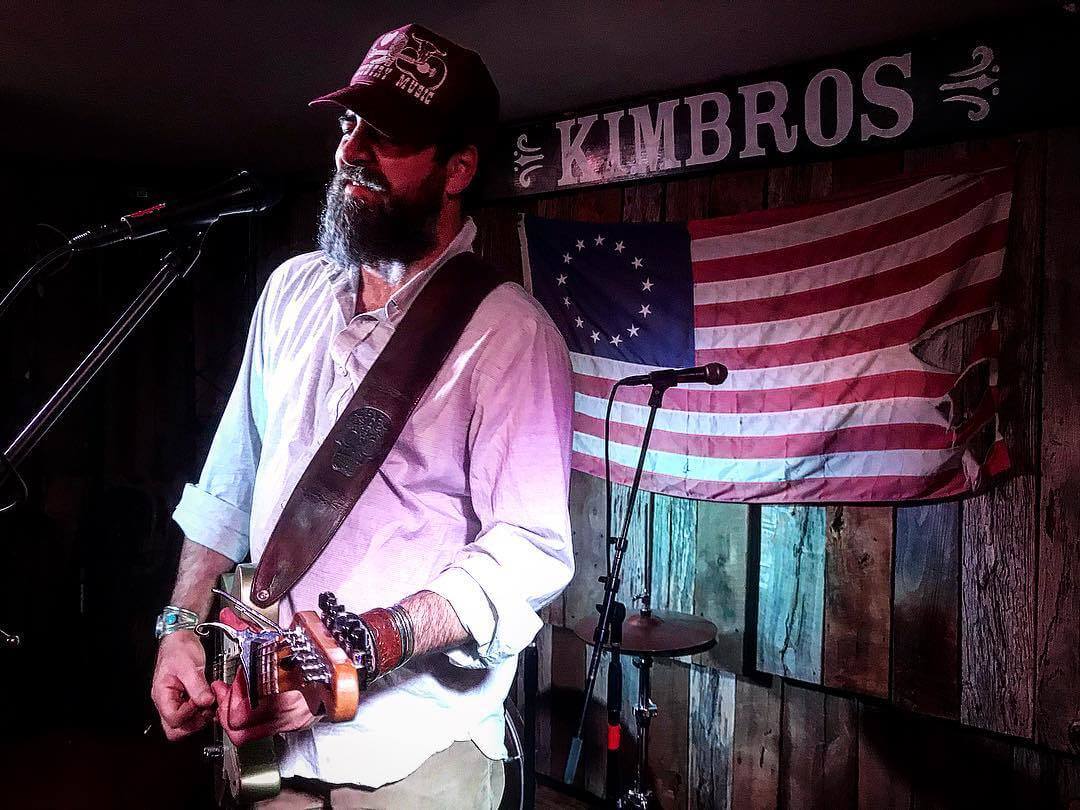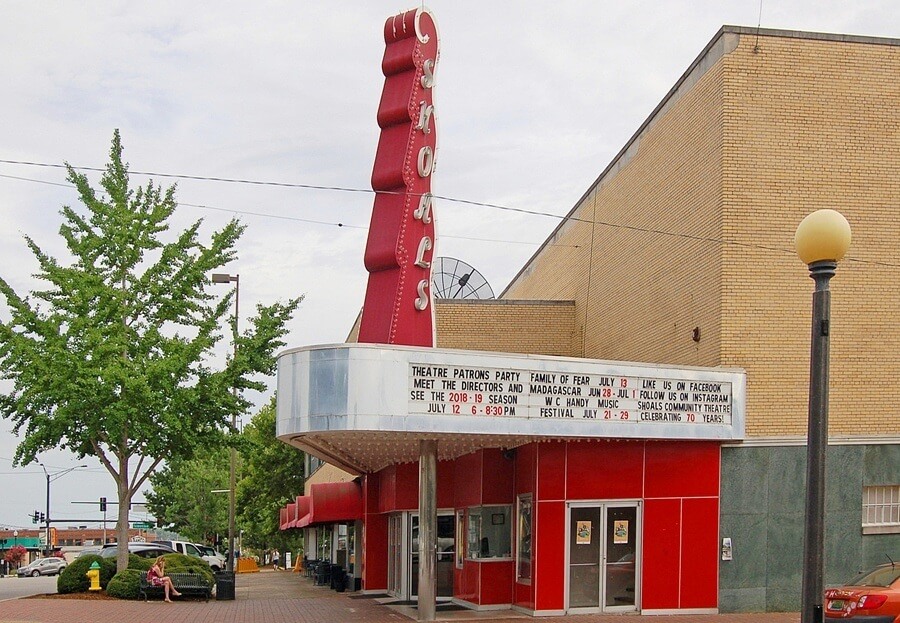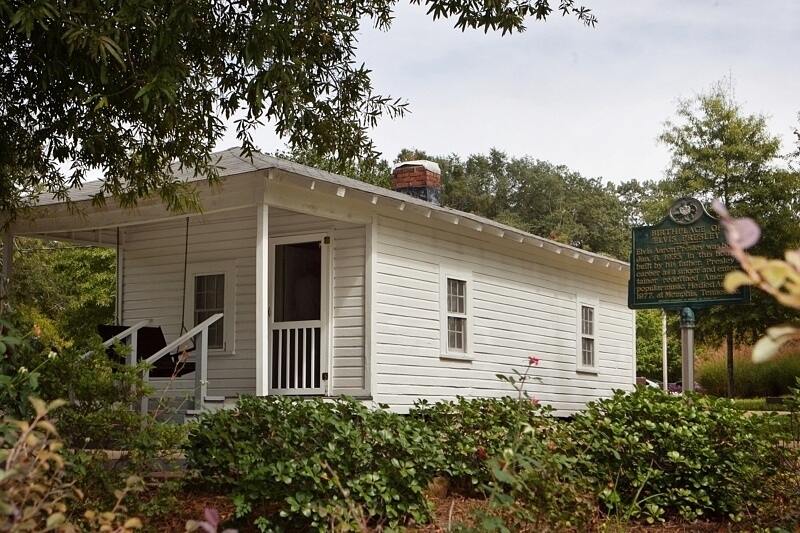Nashville is of course known as Music City, but it’s not all just about country music. Throughout history, Nashville has also been home to active music scenes in many different genres. Rock icons such as Kings of Leon, Robert Plant, Sheryl Crow, The Black Crowes, The White Stripes, The Black Keys, Peter Frampton have all either lived or spent significant time in town. Jimmy Buffett produced his first three albums in Nashville when he was just starting out as a singer/songwriter, and he was one of the first performers ever to grace the stage of the Exit/In back in the 1970s. When a young soldier named Jimi Hendrix was training with the 101st Airborne in Clarksville, he would travel to Nashville on weekend leave to play in clubs on Jefferson Street and in Printers Alley. In fact, Jefferson Street was a hotbed of several different types of music during the middle of the 20th century including jazz, soul and blues, hosting acts like Ray Charles, Etta James and Duke Ellington. The Nashville Symphony is acclaimed far beyond their home at the Schermerhorn, garnering 15 Grammy nominations and seven wins since 2000. The Fisk Jubilee Singers have been performing traditional gospel spirituals from almost 150 years.
This eclectic musical history is not surprising when you realize that the American South is the birthplace of multiple genres of music that are still popular today. The Americana Music Triangle commemorates this musical heritage by drawing attention to the region bordered by a triangle drawn between three major musical centers of the South: Nashville, Memphis and New Orleans. Besides these three iconic cities, the area within the polygon represents all sorts of fertile musical destinations and the home to an astounding nine distinct genres of music: Blues, jazz, country, rock ‘n’ roll, R&B/soul, gospel, Southern gospel, Cajun/zydeco and bluegrass.
Towns such as Clarksdale and Tupelo in Mississippi, Brownsville and Jackson in Tennessee, The Shoals region of Alabama and Cajun country in Louisiana have all made significant contributions to the history of Americana music, and the Americana Music Triangle offers itineraries to visit them all along a path the organization has developed that they call “The Gold Record Road.” While the entire trail represents almost 1,500 miles of potential musical tourism, they have humanely broken the destinations up into shorter itineraries. Nashville is fortunate that several significant destinations lie along the historic Natchez Trace Parkway, a 444-mile recreational road and scenic drive that travels through three states, roughly following the “Old Natchez Trace” travel corridor used by American Indians.

Starting just outside of Nashville and stretching all the way to Natchez, MS, the Trace is a national treasure that offers the chance to travel through both cultural and musical history. If you decide to explore the Americana Music Triangle using the Natchez Trace as your primary path, here are some suggestions and a few caveats about your journey. First of all, the Trace is a federal parkway, not an interstate. This means that the speed limit is 40-50 mph for the entire length of the route, and law enforcement is dead serious about maintaining safety along the Parkway. A speeding ticket on the Trace is literally a federal offense, so don’t plan to get anywhere quickly when you are traveling. But the ride through the lovely curving roads that carry you closer to history and nature is part of the fun anyway. Speaking of nature, you’re liable to encounter all sorts of wildlife ranging from deer to flocks of wild turkeys crossing the road, so be alert for both their and your safety. You won’t find gas stations or convenience stores along the Parkway, but if you plan ahead, you’ll find all sorts of charming country stores and filling stations just off the Trace, and many of them are near destinations that should be part of your musical journey through time.
Traveling south from Nashville, your first stop should be in Franklin where the homey town square is lined with boutiques, restaurants and the historic Franklin Theater that has been the center of musical and cinematic entertainment in the town since 1937. It’s still a great place to take in a show with new and old music acts gracing the stage on a regular basis. For a regular schedule of live Americana music, check out The Legendary Kimbro’s Pickin’ Parlor, where you can encounter writers’ nights, up-and-coming artists and a live radio show featuring Americana music on Saturday nights. The bar is built out of vintage radios, so you know they have a respect for that old-timey music. While you’re in town, consider a meal at Puckett’s Boat House, where they serve up some of the best seafood you’ll find in a landlocked state plus live bands that encourage patrons to hit the dance floor and burn off dinner to music ranging from blues to zydeco.

Puckett’s also has an outpost in nearby Leiper’s Fork. The original Puckett’s has been feeding and entertaining the residents of the sleepy little town for more than 60 years, offering up traditional Southern fare and music five nights a week. Thursday open mic nights are the chance to discover the next big thing before they hit the national charts. The shows start at 6 p.m., and there’s not a cover charge.
As you cross over the Alabama border on the Natchez Trace, the signal from slick Nashville country radio stations will start to fade, replaced by transmissions out of the Shoals region. You can expect to hear classic rock, gospel, blues and all sorts of eclectic music coming from your radio thanks to the varied history of the Shoals, which encompasses the quad cities of Muscle Shoals, Sheffield, Tuscumbia and Florence along the Tennessee River. Locals call that stretch of water “The Singing River,” harkening back to a Native American legend that the Yuchi tribe heard the sound of a woman’s mellifluous voice in the flowing waters.
RELATED: 48 Hours in the Shoals
The Shoals is still a very musical place, steeped in history that has been shaped by the influence of the late legendary producer Rick Hall of FAME Studios and the rocking rhythm section he put together that goes by the name of “The Swampers.” After the Swampers spun off their own recording studio named Muscle Shoals Sound in 1969, the healthy competition between the two production companies was instrumental in the creation of historic music across many musical genres. Both studios are open for tours where you can stand in the rooms where iconic acts like the Rolling Stones, Paul Simon, Lynyrd Skynyrd, Bob Seger, Cher, Rod Stewart, Aretha Franklin, Etta James, Otis Redding and Wilson Pickett all cut important records. Visitors can learn about even more local acts at the Alabama Music Hall of Fame in Tuscumbia.
Live music is also an important part of the Shoals scene. Spots to dine and/or catch local bands include Champy’s, the Shoals Theater, FloBama Music Hall, Rattlesnake Saloon and Swamper’s Bar and Grille in the Marriott Shoals Hotel & Spa, which also happens to be a fantastic place to spend the night while visiting the area. Every summer, the region plays homage to one of Florence’s favorite sons with the W.C. Handy Music Festival. Musicians from across the nation perform in venues all over the area while thousands of descend on the Shoals to honor the famous composer and musician, known as the Father of the Blues.


Your next stop along the Trace is Tupelo, MS, known as “The Home of the King” thanks to the town’s role in the history of the King of Rock n’ Roll. Elvis Presley was born in Tupelo in a humble two-room house that still attracts fans to his birthplace just east of downtown. Visitors can tour the house as well as Elvis’ childhood church, which has been transported to the site. Statues of the King are scattered around town and make for excellent Instagram opportunities, plus you can visit multiple important spots in the young life of Elvis as part of walking, driving or bicycling trails dedicated to his history.
RELATED: 24 Hours in Tupelo, MS
Stops along the way include Tupelo Hardware, where Elvis’ mother bought the young boy his first guitar, the famous Homecoming Statue commemorating two concerts Elvis held in the Fairpark neighborhood of downtown in his triumphant return as a star and Johnnie’s Drive-In, a favorite burger joint of young Elvis.
For live music in Tupelo, it’s tough to beat Blue Canoe, home to original live music performances every night of the week except Sundays. The restaurant and bar also specializes in elevated Southern fare including specialty burgers and sandwiches and down-home classics like pork & greens or shrimp & crawfish pasta. Beer lovers will also be pleased to encounter a long list of craft drafts. Other spots for a nice bite include Kermit’s Outlaw Kitchen and Connie’s Fried Chicken.

Hop back on the Trace for the trip to Mississippi’s capital city, Jackson. The largest metropolis along the Trace (other than Nashville,) Jackson has long been one of the urban capitals of the blues through history. Known as “The City with Soul,” Jackson is still home to the legendary Malaco Records, responsible from innumerable hits through the decades ranging across musical genres from blues to gospel to R&B and soul. Have you ever danced with abandon to Anita Ward’s disco-era classic “Ring my Bell?” Even if you won’t admit it (You did.), now you’ll know that song was cut at Malaco in 1979 along with other legendary hits like “Mr. Big Stuff” and “Groove Me.” Call in advance, and you can tour the studios where the magic was made.
Jackson has been hard at work restoring several historic districts around town that have musically historical significance, including Farish Street and Fondren. The latter has become a bit of a dining hotbed with more than two dozen independent eateries in the neighborhood including Babalu’s Tapas & Tacos, Saltine Restaurant, The Pig & Pint and Walker’s Drive-In.
You might want to stay the night to catch all the music and fun in Jackson, and fortunately the city has a plethora of lodging options. Choose from national chains like Hilton Garden Inn or Residence Inn or more historic hotels such as The Old Capitol Inn.
If you make it all the way down the Natchez Trace Parkway to its terminus in Natchez, MS, pat yourself on the back! Your reward for reaching the end of the long road is a fantastic music scene and plenty of significant historical sites to visit. Natchez is the oldest continuous European settlement along the Mississippi River, and for more than 300 years the river has been a huge part of the soul of the city. Known for a plentitude of lovely antebellum homes and a charming downtown historic district, Natchez has twice been named Best Small City in the U.S. for a Weekend by AAA Traveler readers.
A sad part of the city’s musical history was the the tragic 1940 fire at the Rhythm Night Club where more than 200 patrons perished, most of them African-American, including Chicago jazz musician Walter Barnes and his band. A Memorial Museum pays honor to this event and features exhibits of photos, newspaper articles, live recordings of stories from survivors and examples of music that the band played that night.
On a happier note, Natchez is still home to a vibrant music community, and modern day stars often take pilgrimages to the town to commemorate its culture. Rolling Stones leader Mick Jagger served as executive producer of the 2014 James Brown biopic “Get on Up” and spent an extensive time in Natchez filming scenes for the movie. Paul McCartney and Johnny Depp jammed in Natchez for the video for the ex-Beatle’s song “Early Days,” which also featured local blues artists like Lil Poochie and others.

Live music is still important to the community at places like Smoot’s Grocery, Andrews Tavern, or Bowie’s Tavern. Walking or driving around the city, you’ll also encounter several markers that are part of the Mississippi Blue Trail which commemorate important figures and events in the history of the blues. In addition to larger hotels, Natchez offers lots of historic B&B properties where you can enjoy lodging with a special personal touch.
For an authentic antebellum dining experience, visit the Monmouth Historic Inn & Gardens where you can dine in the original men’s and ladies’ parlors of the main house. For an even older historical spot, check out King’s Tavern, the oldest standing building in the Mississippi Territory and Natchez circa 1789.
After close to 450 miles on the Natchez Trace, you should be ready to take the fast lane home, and the interstate should save you at least a little time. But you’ll also have experienced a magical journey through the history of American music along the The Gold Record Road. For more information in planning your trip, be sure to check out the Americana Music Triangle’s official website.
**********
Find more amazing Southern destinations in our travel section. Click HERE!


















